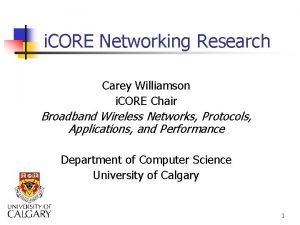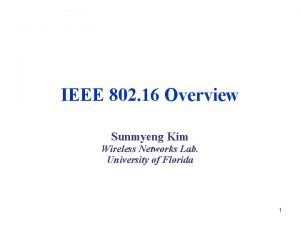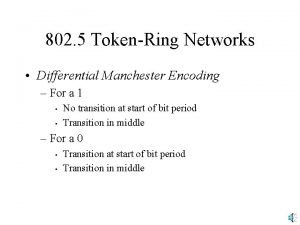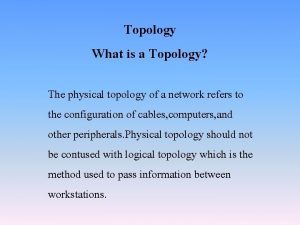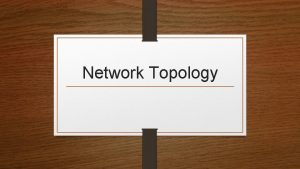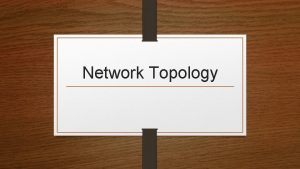802 5 TokenRing Networks Topology An alternative to







- Slides: 7

802. 5 Token-Ring Networks: Topology • An alternative to Ethernet 802. 3 LANs • Physical Layer Topology: Ring – Stations connected in a loop – Signals go in only one direction, station-tostation – Not bus physical layer topology like Ethernet 802. 3

802. 5 TRN Physical Layer: Topology • Physically, stations connect to access units which are connected in a ring Stations Access Unit STP link from Station to Access Unit UTP Link from Station to Access Unit Station

802. 5 TRN Physical Layer: Wiring • Most connections use shielded twisted pair (STP), which has each pair and the whole cable covered with a metal shield to reduce interference Access Unit STP link between Access Units Access Unit Stations Access Unit STP link from Station to Access Unit UTP Link from Station to Access Unit Station

802. 5 TRN: Physical Speed • 802. 5 Speeds – Initially, 4 Mbps – Now, mostly 16 Mbps – 100 Mbps is standardized but not widely used

802. 5 TRN MAC Layer: Token Passing • Media Access Control – Not CSMA/CD – Token passing – Special frame called a token circulates – Station can only transmit if it has the token Transmits Token

Token-Ring Networks • 802. 5 Token-Ring versus 802. 3 CSMA/CD-Bus – Token-Ring is more reliable – Token-Ring is more efficient – Token-Ring is more expensive – Token-Ring has a small market share – Companies buy something good enough to meet requirements, and 802. 3 standards do this

802. 3 Ethernet versus 802. 5 Token-Ring Network • Both use 802. 2 Standard at the LLC Layer • MAC Layer: CSMA/CD versus tokenpassing • PHY Layer Topology: Bus versus Ring 802. 3 LLC MAC Access Control PHY Topology 802. 5 802. 2 CSMA/CD Token Passing Bus Ring


